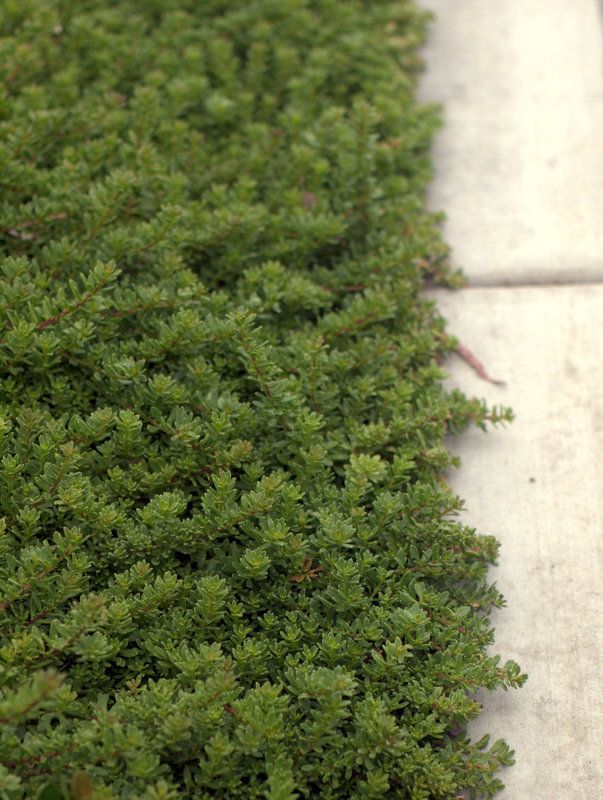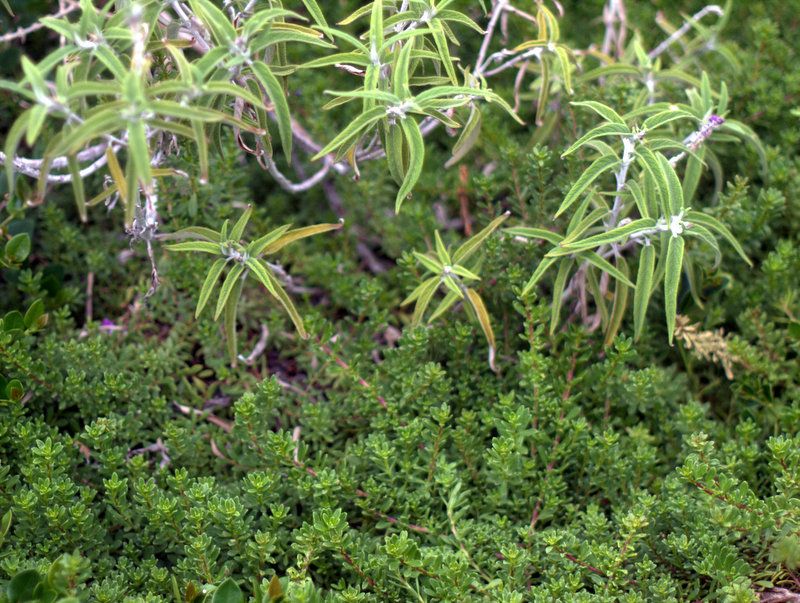I’ve got to say it’s been a long time coming, but it’s still just a tiny bit surreal to wake up every day to more MSM coverage on lawns, and by extension, the plants that will have to replace lawns. Suddenly, in just two months’ time, the governor has bravely steered the conversation to the generally ignored world of plants and garden design. Now my usual solipsistic focus on what I’m planting has shifted to wondering what in the world everyone else is going to be planting. How is the mostly plant-indifferent public going to figure this out quick and dirty, so to speak? (Hint: garden designers are your friends!) My theory on the enduring popularity of lawns is that they’re probably the easiest garden feature to understand and control. And in a lot of ways, human life and grasses are inextricably linked. Controlling grasses is literally in our blood. In roughly 10,000 years, life as nervous prey in tall grass has eased into settling into Adirondacks with icy drinks on tightly mown carpets of lawn.
Emotionally, it’s hard to give up those clear, safe sight lines. And mixed plantings require far more decision making, which can quickly push people out of their plant comfort zone. And where natural rainfall supports a small lawn, why not? A flat, green, negative space has lots of fans. Mid Century architects wouldn’t know what to do outdoors without lawn. Here in California, the most diehard lawn fans are apparently looking into artificial turf in record numbers. I admit I find this solution scary for any space bigger than an area rug. It’s already clear this is going to be a tricky transition away from lawns.
Sunset’s “Gotcha Covered” explains the superiority of living plants as ground cover here, in comparison with paved surfaces, but there’ll be similar issues with artificial turf:
“As all plants undergo evapotranspiration—the process of releasing water through their leaves, then discharging it back into the environment—they help humidify, oxygenate and cool the air. Paved surfaces, on the other hand, warm the air by radiating the sun’s heat back into the environment, increasing air temperatures by15 to 25 degrees Fahrenheit. Using groundcovers near, or in place of, paved and hardscaped surfaces helps reduce that air temperature and can even lower air conditioning bills.”
And what about soil health underneath that artificial turf, or how our gardens serve as habitats for species other than ourselves? Let’s not panic and rush to roll out the outdoor carpeting just yet. If the prospect of replacing the lawn seems daunting, just remember the Chinese proverb:
If you want to be happy for a day, get drunk; a week, kill a pig; a month, get married; for life, be a gardener.

Aside from natives, there’s creeping rosemaries, westringias, grevilleas, cotoneasters, helianthemum off the top of my head. But keep your eyes open, and you’ll see examples of low and evergreen all over town. Above is Myoporum parviflorum, a fast-growing Australian native with almost inconspicuous tiny white flowers.

The Salvia leucantha and myoporum were filling in a parking strip at a local market. I’m trying out a red-leaved myoporum at home with succulents.
Las Pilitas Nursery has compiled a list of “Less than a foot high ground cover plants that are native to California.”
San Marcos Growers helpfully breaks up their extensive list into useful categories. Rancho Santa Ana Botanic Garden has lists of Calif. natives by category here.
And for lawn-substitute grasses, there’s no better source of information than John Greenlee.

Before commenting on your post, I just had to Google that Myoporum. According to Google, its common name is creeping boobiala! What a great common name. I have to grow this.
Back when I worked at Nurseryland in San Diego county ( mid-70’s to mid 80’s) we used to sell Myoporum by the flat. Not as a lawn substitute of course;that philosophy was unknown at the time. Instead it was used as a ground cover for the carved up hillsides of tract housing. One neighbor on my block thus far has installed a faux lawn.Though it is much more attractive than astro-turf, it has a bit of a mid-day plastic-y sparkle to it.It will certainly look odd in our late-summer dormancy period.
Thanks for the links. I briefly considered artificial turf but that was more a matter of desperation than conscious consideration. It has too many negatives in my view. I’ve got some Myoporum growing along the steps to my slope – it’s relatively inexpensive, attractive and grows FAST but it can’t tolerate much in the way of foot traffic.
@Alison, how’d I miss that? I saw Australian Juniper, etc. but you’re right. Creeping Boobialla, very memorable!
@Kathy, I remember seeing more of it around years ago but it’s been a while. Looked really amazing in the hell strip! I think myoporum’s ship has arrived.
@Kris, it’s spreading pretty fast here too. I found a ‘rubra’ but haven’t seen much color yet.
I think it was Emily Green who pointed out that lawns, after all, are easy. Water the thing and hire a guy who can’t speak English for a pittance to mow whatever is there. Easy.
We have a little area-rug sized bit of artificial. I (and the pups) like it. Right fake plant, right place.
During the Millennium Drought (2000-2009) here in south-east Australia many people thought that fake turf would be a great alternative to a real lawn that they were no longer allowed to water. Then they discovered that it can become so hot in full summer sun (more than 125 degrees F) that you can’t actually sit on it, or walk on it with bare feet.
Boobialla is a Aboriginal word of the D’harawal people but I don’t know what it means. You need to clip it regularly as it can start to get bare and woody in the middle as it ages.
@Hoov, and that’s why change is going to be so hard, leaving easy behind. Emily Green has done such good work on this topic.
@Catherine, I couldn’t find a translation either. The heat issue sounds prohibitive, thanks for bringing that up.
“And what about soil health underneath that artificial turf, or how our gardens serve as habitats for species other than ourselves?” Exactly.
I need to fill a narrow L-shaped strip o’ dirt next to the house with… something. Can’t have roots to China, must do well with only a little water. That excellent Las Pilitas link will come in handy.